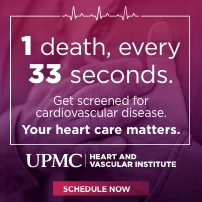August 4th, 2017 by WCBC Radio
With more severe thunderstorms forecasted throughout Maryland for late afternoon in Western Maryland and late night in Central Maryland, AAA Mid-Atlantic is urging motorists to take steps to ensure their safety. The heavy downpours and strong winds forecasted will mean wet roads, poor visibility, and possibly downed trees and flooding in some spots.
“While some drivers may say it is just rain, AAA research indicates that nearly three times as many crashes occur when it’s raining than when it snows,” says Ragina Cooper Averella, Manager of Public and Government Affairs at AAA Mid-Atlantic. “Additionally, there is a greater proportion of single vehicle crashes than multiple-vehicle collisions when roads are wet.”
“During severe thunderstorms, such as those of early evening yesterday, motorists are advised to delay travel if at all possible,” added Averella. “If drivers are on the road when a heavy downpour hits, they are urged to find a safe spot to park immediately, such as a shopping center parking lot or park and ride facility until the storm passes.”
While pulling to the side of the road or under a bridge could be a temporary safe option, drivers need to keep in mind that if their visibility of the road is compromised, other drivers may have difficulty, as well, distinguishing between the road and the shoulder. Drivers parked on the side of the road increase their potential of being hit by another vehicle due to poor visibility or a vehicle skidding off the road.
If motorists must drive, AAA advises drivers to buckle up, slow down and increase following distance to ensure their safety and the safety of everyone with whom they share the road.
AAA offers these 10 wet-weather driving reminders:
1. Slow down. Drive defensively and with compromised road conditions in mind.
2. Increase following distance. In optimal conditions, drivers should allow 3-4 seconds to stop. When roads are wet, following distance should be increased to 8-10 seconds
3. Make sure headlights are on – It’s the law and important for safety, as it helps a driver see the road and be seen by others.
4. If you begin to skid or hydroplane, always look and steer in the direction you want to go and avoid slamming on the brakes.
5. Never drive through standing water, as the depth of the water can be deceiving. As little as six inches of water can cause you to lose control of your car and potentially stall your engine.
6. Never use cruise control in wet-weather.
7. Use the central lanes – When driving during heavy rain, use center lanes of the road (without straddling the yellow line). Avoid outside lanes where the water collects at curbside
8. Use your defroster - Keep the air inside your car dry and prevent windows from fogging by using your defroster along with your air conditioner.
9. Know your vehicle - Light cars, vans and other “boxy” vehicles have a tendency to be blown by strong gusts of wind.
10. Take the nearest exit - If conditions worsen to the point where there is any doubt about your safety, take the nearest exit and find a safe place to park. Don’t just stop on the shoulder or under a bridge. If your visibility is compromised, other drivers may be struggling too.





.jpg)













